The Importance of Standing Hoists in Supporting Bariatric Patient Care
Standing hoists are specialised tools designed to help people with limited mobility stand and move more easily. For bariatric patients, who often face challenges due to their weight, standing hoists can make a big difference in their daily lives. These devices enhance mobility and help ensure safety, allowing patients to perform tasks with greater confidence and independence.
This article will cover the benefits of standing hoists for bariatric patients, the available types, and important guidelines for their use.
Definition and Characteristics of Bariatric Patients
Individuals with bariatric conditions are those who are obese, usually with a Body Mass Index (BMI) of 30 or higher. Obesity can range in severity, with morbid obesity defined as a BMI of more than 40. These individuals often experience unique health challenges such as joint pain, limited mobility, and increased risk of cardiovascular disease, diabetes, and related conditions. They may require specialised care and equipment to safely and effectively address their weight and physical limitations.
Common Challenges Faced by Bariatric Patients in Mobility
Mobility is one of the most significant challenges faced by bariatric patients. Due to their weight and size, they often struggle with performing basic tasks such as standing, walking, and transferring from one position to another. Joint issues, muscle fatigue, and balance problems can further complicate movement, making simple activities difficult and increasing the risk of falls and injuries. Many bariatric patients also experience a loss of independence, as they may rely on caregivers for assistance with daily tasks.
The Role of Standing Hoist for Bariatric Patients
Because bariatric patients face unique challenges, they must be provided with tailored solutions that meet their specific needs. Standard equipment may not be suitable for individuals with higher body weights, leading to discomfort, safety concerns, or even injury. Specialised devices, like standing hoists designed for bariatric patients, are built with higher weight capacities and enhanced safety features to ensure that transfers and movements are as secure and comfortable as possible. These tailored solutions improve mobility and safety and help restore independence, boosting the patient’s physical and emotional well-being.
Benefits of Standing Hoists
-
Enhanced Mobility
Standing hoists can help improve mobility for bariatric patients by making it easier to stand up and move between positions, such as getting out of bed or transitioning to a chair. These devices support patients during transfers, reducing physical strain and allowing more effortless movement. With this assistance, patients can perform daily tasks with less help, promoting more independence and giving them control over their activities.
-
Safety and Support
Bariatric patients are at higher risk of falls and injuries, but the secure support provided by these hoists reduces that risk. The devices are designed to safely handle the patient's weight, making movement more secure. This also helps caregivers, as lifting or assisting without a hoist can be physically demanding and lead to injury. Using a hoist ensures both patients and caregivers are safe during transfers.
-
Health and Well-Being
Standing hoists also contribute to better health by promoting regular movement. Being able to stand and transfer reduces the risk of complications like pressure sores, blood clots, and muscle weakness from staying immobile. Regular movement improves physical well-being and keeps the body active.
Additionally, standing hoists can boost mental health. Many bariatric patients feel frustrated by their limited mobility, and being able to move more independently helps improve their mood and confidence. Regaining independence can give patients a more positive outlook and improve their well-being.
Types of Standing Hoists
A. Manual Standing Hoists
Manual standing hoists are operated by the caregiver using physical effort to lift and transfer the patient. These hoists typically feature a lever or pump mechanism that allows the caregiver to raise and lower the patient manually into standing.
Features
-
No need for electricity or batteries
-
Simple, lightweight design
-
Usually more affordable than electric models
Benefits
-
Portable and easy to move around without needing a power source
-
Cost-effective for those who need basic support for transfers
-
Suitable for environments where electricity may not be accessible
Limitations
-
Requires significant physical effort from caregivers, which may lead to strain or injury over time
-
Less suited for frequent use with bariatric patients, as heavier patients may be more difficult to lift
-
Limited in terms of advanced features like adjustable speed or movement control
B. Electric Standing Hoists
Electric standing hoists are powered by a motor, making transfers easier and less physically demanding for caregivers. These hoists operate via a remote control or push-button system, allowing patients to lift and lower with minimal effort.
Features
-
Powered by electricity or rechargeable batteries
-
Equipped with motorised lifting mechanisms for smooth transfers
-
Often include additional safety features like adjustable speed and emergency stop functions
Benefits
-
Requires little physical effort, reducing the risk of caregiver injury
-
More efficient and comfortable for patients, especially for those needing frequent transfers
-
It is ideal for bariatric patients, as electric hoists can handle higher weight capacities with ease
Limitations
-
Typically more expensive than manual hoists
-
They are heavier and bulkier, making them less portable
-
Dependence on electricity or charged batteries, which may not be practical in specific settings or during power outages
Both types of standing hoists serve essential roles, but electric models are often preferred for bariatric patients due to their ease of use and ability to handle greater weight.
Best Practices for Transferring Bariatric Patients
Transferring bariatric patients requires extra care and attention. Here are some best practices:
-
Use the Right Hoist: Ensure the standing hoist is designed for bariatric use and has an adequate weight capacity to support the patient safely.
-
Two-Person Assistance: For bariatric patients, it’s often safest to have two caregivers assisting during transfers to ensure full support and safety.
-
Patient Communication: Communicate with the patient throughout the transfer process. Explain each step to keep them comfortable and reduce anxiety.
-
Proper Sling Selection: To provide maximum support, use slings specifically designed for bariatric patients. Ensure they are fitted correctly and securely.
-
Move at a Comfortable Pace: Transfers should be done slowly and at the patient’s comfort level, avoiding rushing or jerky movements to prevent discomfort or injury.
-
Posture and Body Mechanics: Caregivers should maintain good posture and use proper body mechanics to avoid injury while assisting in the transfer.
Conclusion
Standing hoists help bariatric patients move more easily and safely, reducing the need for caregiver assistance. By using the right equipment, patients can become more independent, while caregivers experience less physical strain, improving life for both.
Simplify patient transfers!
Request your standing hoist quote now on MedicalSearch and ensure maximum safety and comfort!
FAQ:
-
What types of standing hoists are available?
There are two main types of standing hoists: manual and electric. Manual hoists require physical effort from caregivers, while electric hoists use a motor for easier transfers.
-
How do I choose the right standing hoist for a bariatric patient?
Select a hoist specifically designed for bariatric use, ensuring it has an adequate weight capacity and safety features. It's also beneficial to consider the patient’s specific mobility needs.
-
Are there safety guidelines for using standing hoists?
Yes, it’s important to use the right hoist for the patient’s weight, communicate clearly with the patient during transfers, and consider having two caregivers assist for added safety.

.jpeg)

-160x160-state_article-rel-cat.png)

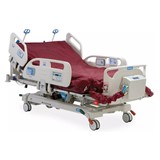
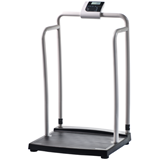
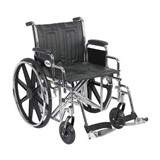
-160x160-state_article-rel-cat.png)


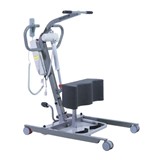
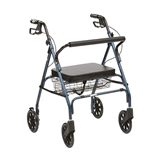
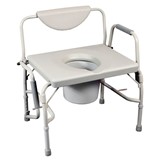
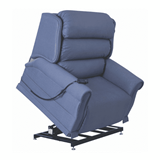
-205x205.jpeg)